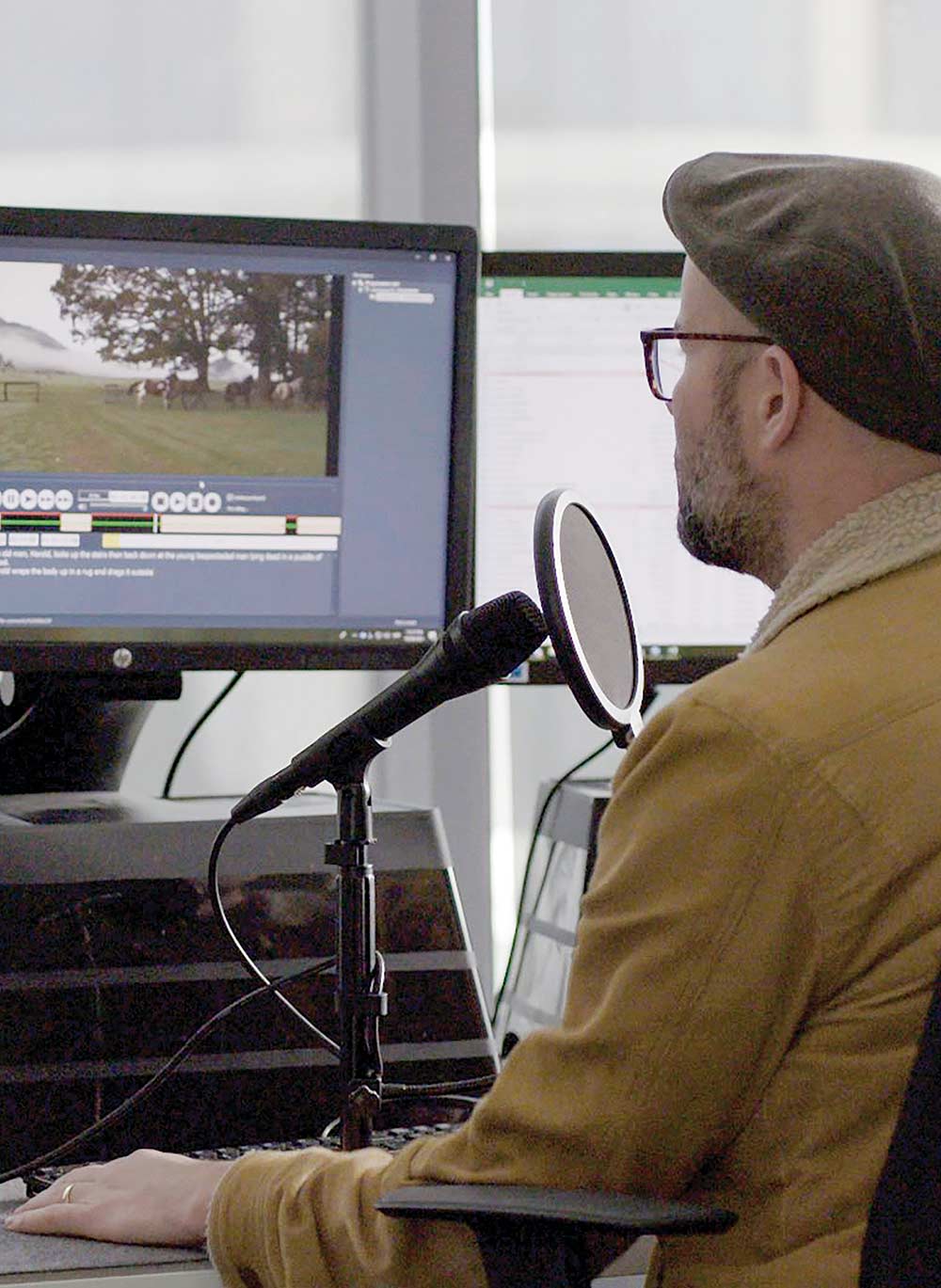

Sight Unseen
Audio description lets the visually impaired ‘see’ everything in a film or TV series. But few of our streaming services include it. Jean Teng talks to a man whose job it is to paint with words.
Paul Harrop watches a lot of television. Holed up in a soundproof booth with fuzzy walls, he sits cross- legged on a chair with an episode of Alone Australia, a survivalist show whose current season is set in the South Island of New Zealand. It is, as these things go, a fairly good show to audio describe. “There’s a lot of sweeping shots of landscapes,” he says.
Audio description (AD) is a media accessibility service that helps the blind and low vision community (over 180,000 New Zealanders) enjoy the audiovisual watching experience a bit more. With television, it’s turned on via your remote, in the same way you’d switch on captions — you may have accidentally switched it on and wondered where the voiceover was coming from. What you’re hearing is the audio describer detailing what’s happening on screen in between the dialogue. Perhaps a grizzly survivalist treks alone through a forest and hacks at a bush with a machete, for example — a scene that could be totally lost to a blind viewer without description. Essentially, they paint pictures with their words.
Harrop has been an audio describer since 2013. He tells me the point of AD is to “give out all the same information that sighted people receive automatically,” while also being both “efficient and interesting”. Efficient because you often only have limited space to work with, and interesting because you’re still part of a product that’s meant to entertain people. Although a certain amount of neutrality is required and appreciated, it needs to be smoothly incorporated into the tone of the media (and, somehow not “hypnotic”, which Harrop says can be tougher said than done). “What I say completely dictates how they watch the show,” he points out.
It is, at its heart, a fairly weird job. You are by and large alone in a booth all day. You watch a television show or movie, note the gaps, decide whether it’s of service to the viewer to describe what’s happening in that gap, script what you want to say, then voice it.
When I sit in on Harrop, he shows me what he does by playing a snippet of Alone Australia. A man talks to the camera about his position in the game, and then looks out onto a lake. The camera moves to view that lake, too. “I mean, there’s enough space to describe the lake, just barely, but do I have to? Like, how does it serve the viewer?” He ponders. “I mean, maybe if the lake becomes important later on.”
The way we audio describe in New Zealand is different from anywhere else in the world. Without the resources to pay separate people to do each individual job — scripting, voicing, and sound mixing — Able figured out a process in which one person did everything from end to end. It is, as they say, the number 8 wire way — and requires someone with a harmonious convergence of writing, voicing and administrative skills. And doesn’t mind being alone a lot.
